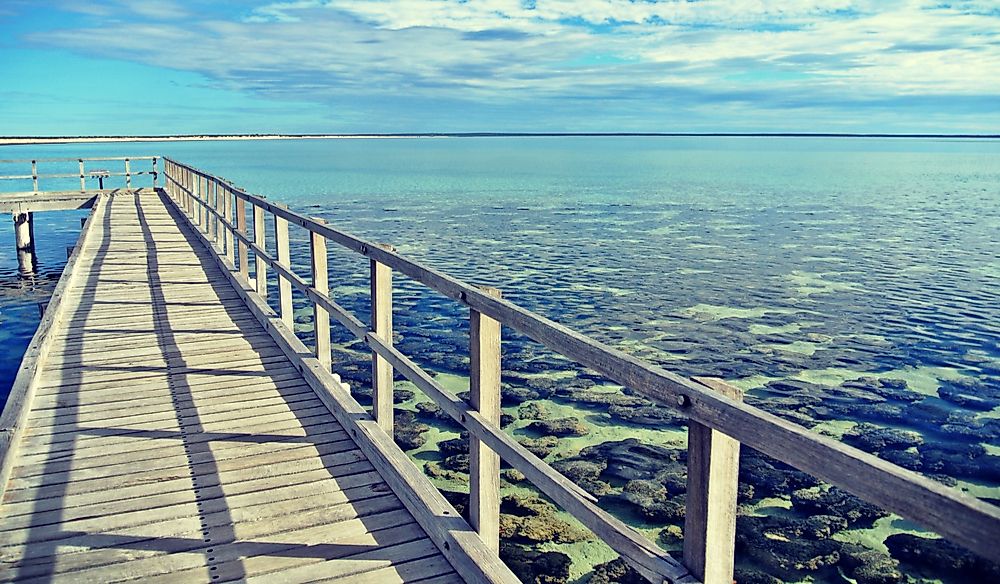Where Is The Hamelin Pool Marine Nature Reserve Located?

The Hamelin Pool Marine Nature Reserve is located in Shark Bay in Western Australia. The area is approximately 24 to 27 degrees below the Equator and is comprised of 310,000 acres. This UNESCO World Heritage Site is renowned as one of only two locations in the entire world in which a diverse array of naturally occurring living marine stromatolites can be found. These ancient formations only form in a particular set of environmental conditions; specifically in shallow highly saline waters. They are composed of layers of sedimentary rock made up of a unique type of bacteria known as cyanobacteria. Taking the shape of mounds or columns, these structures provide modern visitors with a glimpse back into what life on Earth was like over 3,500 million years ago. The Hamelin Pool Marine Nature Reserve is scientifically and historically notable due to its rich biodiversity as well as the sheer abundance of stromatolites found here.
Location
Australia’s Hamelin Pool is situated in the eastern (or inner gulf) portion of Shark Bay which is geographically cut off from the rest of the bay by the Peron Peninsula. This particular piece of land, named after French naturalist François Péron, is characterized by rust-colored sand hills and gypsum hollows known as birridas by local residents. The Hamelin Pool can be found next to the Shark Bay Marine Park and Hamelin Pool Telegraph Station. Visitors can access the protected area using the Hamelin Pool Road and then proceeding along the grounds of the historic telegraph station.
Boardwalk Views
The Hamelin Pool Marine Nature Reserve includes a 656-foot boardwalk which serves to provide visitors with a one of a kind opportunity to get as close as possible to the stromatolites. Also called “living fossils”, the stromatolites must be protected due to the risks of damage being inflicted not only by naturally occurring environmental factors but also in relation to deterioration as a result of contact with the public.
UNESCO World Heritage Site
The Shark Bay World Heritage Site was named a UNESCO World Heritage Site in 1991. Along with the Hamlin Pool Marine Nature Reserve, the area is also home to Old Hamelin Pool Telegraph Station which serves as a museum for tourists who have come here from around the globe. This building was constructed in 1884 and originally served as a telegram link between the local communities of Roebourne and Perth.
Flora and Fauna
The Hamelin Pool is not only home to an impressive array of stromatolites but many diverse species of plants and animals can also be found here. Among the fauna native to this region of Australia include birds (the chiming wedgebill, rufous fieldwren, malleefowl), reptiles (shoemaker frog, loggerhead turtle, and woma python), fish (manta ray, Hamelin cockle, and tiger shark), and mammals (desert mouse, banded hare-wallaby, and Shark Bay bandicoot). The presence of microbial mats in this environment is also noteworthy in terms of furthering our knowledge as to what life was like here three billion years ago. Microbial mats, which are made up of various complicated ecosystems, are widely regarded by scientific experts as having played a part in the evolution of life on Earth but further study is needed in order to uncover the specifics of their actual role.











